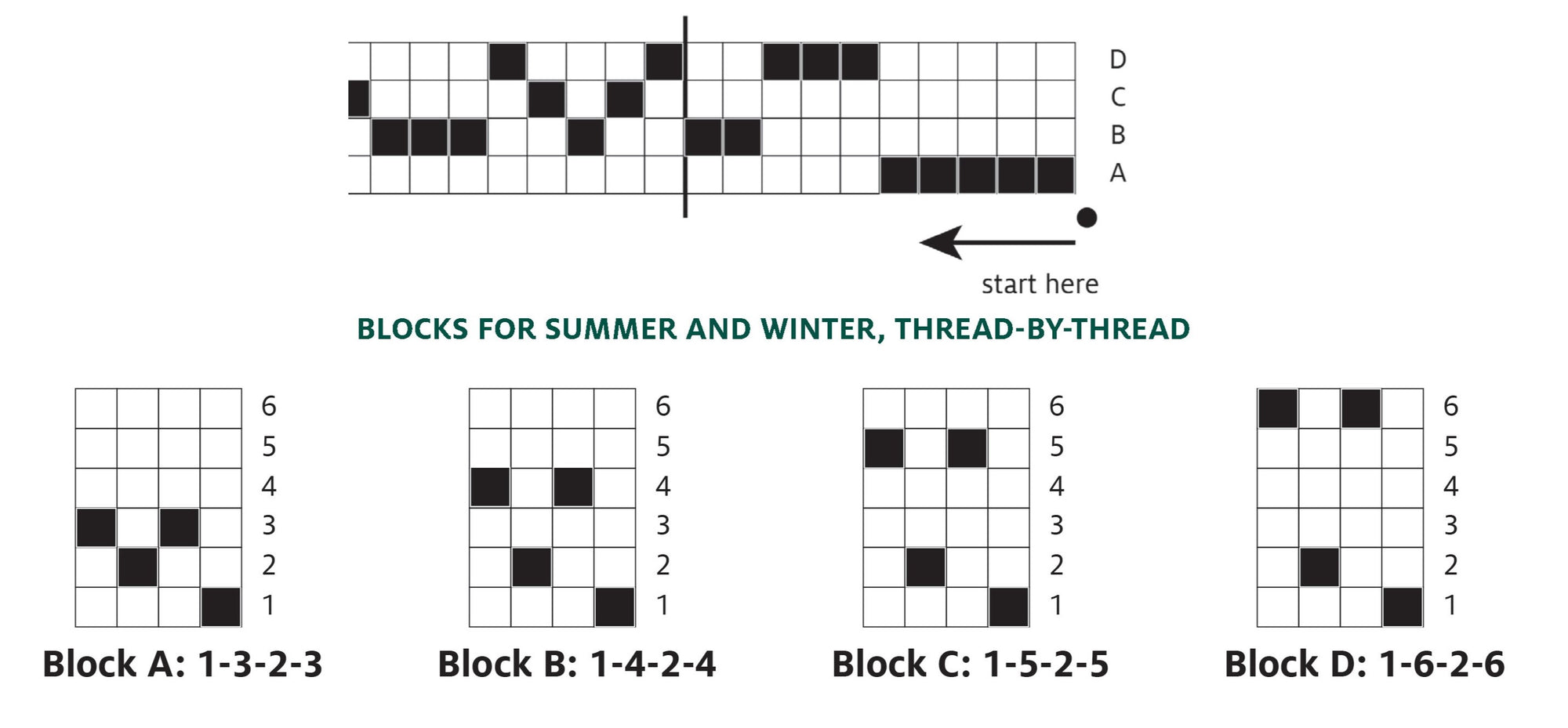Warping and Weaving from Profile Drafts
By Deb Gerish
If you're comfortable with thread-by-thread drafts but have never worked from a profile draft, don't worry. It's not that difficult to make the transition!
What You'll Need
-
thread by thread draft—we’ll use the one from Morning Frost Drawstring Bag
-
profile draft—we’ll use the one from Summertime Kitchen Towels
Directions
Reading a Typical (Thread-by-Thread) Weaving Draft
A typical weaving draft shows you what to do thread by thread. Consider this example, from Sienna Bosch's Morning Frost Drawstring Bag.
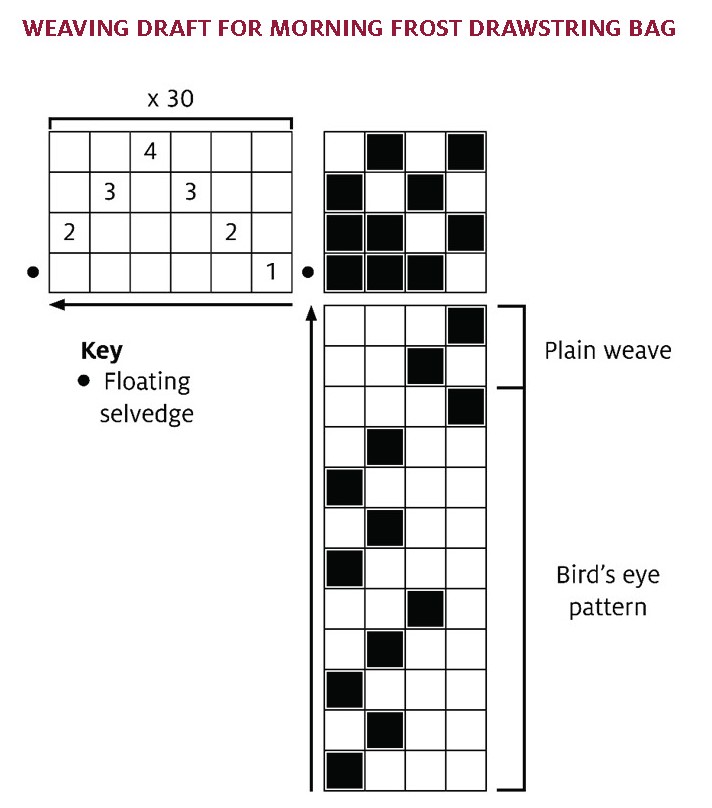
At the top left, we see instructions for threading the shafts: make a floating selvedge, then thread shafts 1 through 4 in a 6-thread repeat, 30 times, then end with a floating selvedge. If the pattern called for different colors in the warp, the threading might indicate how to place those colors, or there might be a separate table for the warp color order.
At the top right, we see the tie-up. This pattern requires 4 treadles, tied up in different combinations to the shafts. The leftmost treadle raises shafts 1, 2, and 3; the next one raises shafts 1, 2, and 4. The two treadles on the right are set up for plain weave, lifting shafts 1 and 3 or 2 and 4.
At the bottom right, we see instructions for treadling two different weave structures, plain weave and the bird's eye pattern. When you're weaving plain weave, you'll press the treadle that raises shafts 1 and 3, then the treadle for shafts 2 and 4. Plain weave has a 2-row repeat, where bird's eye has a 10-row repeat.
Weaving drafts might also include the drawdown in the bottom left. This part is informational rather than instructional—it shows how warp and weft threads will interlace with each other.
Now we'll explore the differences with the profile draft for Anu Bhatia's Summertime Kitchen Towels. This project uses summer and winter, a block weave structure. As with any project or draft, you'll know how warp the loom from the threading and tie-up charts.
Threading from a Profile Draft
Here's the most important thing to remember: those four rows indicate blocks, not shafts.
Instead, use the profile threading to thread for blocks. For the Summertime Kitchen Towels, you begin with a floating selvedge, then thread block A five times, then block D three times, then block B twice, then one more block D, then block C once, and so on.
For summer and winter, each block has 4 warp ends in it, threaded as shown in these thread-by-thread drafts. For examples, when the profile draft tells you to thread block A, you look to the thread-by-thread draft for block A, and thread 1-3-2-3.
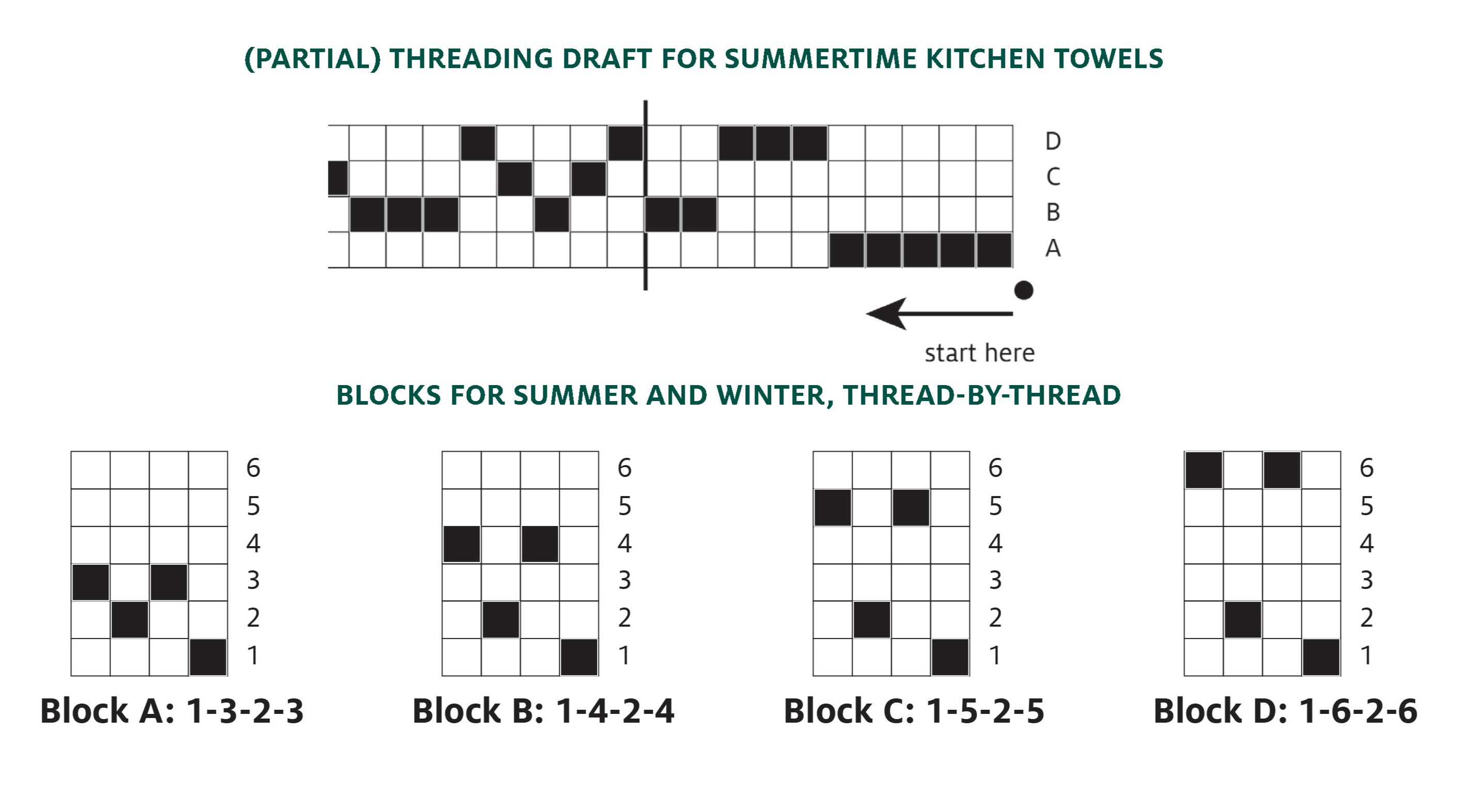
Tying Up from a Profile Draft
The tie-up section of a profile draft should look more familiar. Tie up as you would for a thread-by-thread draft. Notice that the treadles correspond to tabby and the four blocks: there are two treadles for tabby (a, b), then two treadles for each block (A1, A2, B1, B2, etc.)
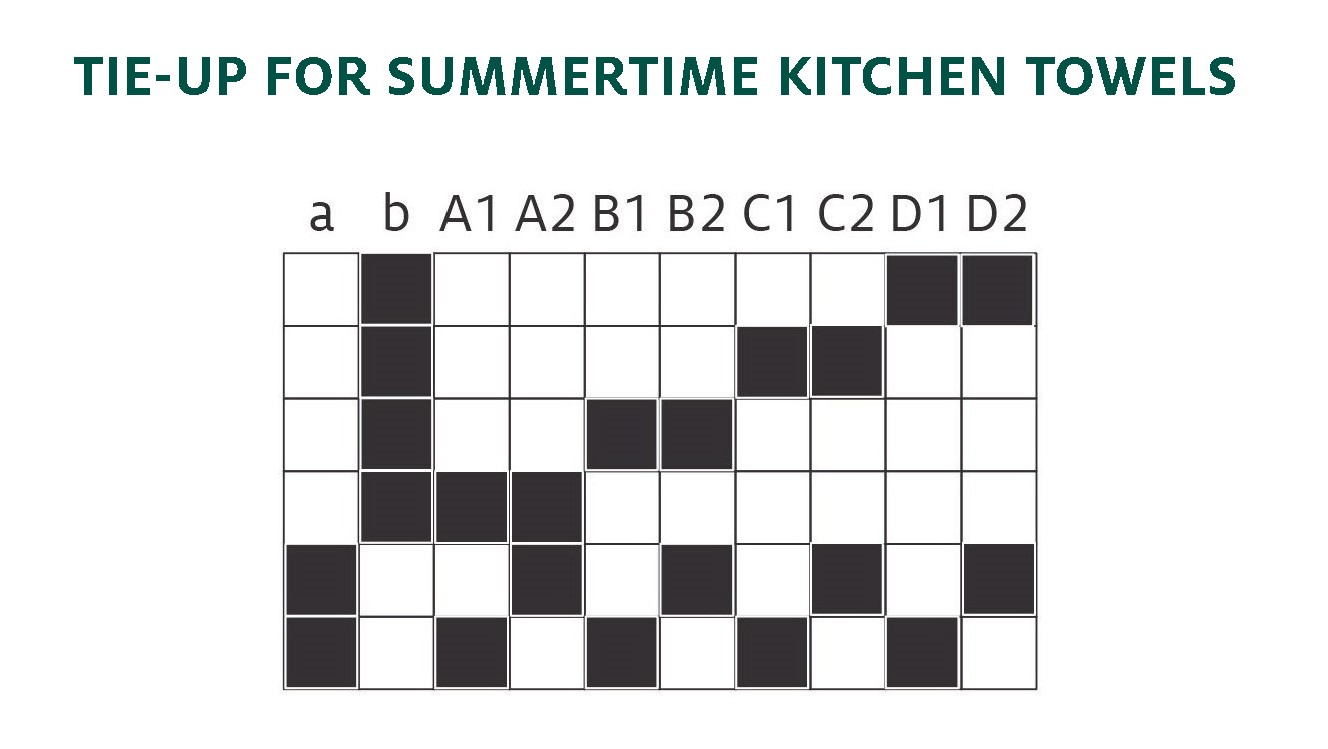
Treadling from a Profile Draft
As you weave the fabric, go back to thinking about blocks instead of treadles. Look at the beginning of the treadling shown below. For this summer and winter example, which uses tabby picks between each pick of pattern weft, you'll work 3 blocks of A, then there's a folding line, then 3 more blocks of A, two blocks of D, and so on.
You'll again start by looking at the profile draft, then following the instructions for that block. To begin this draft, you'd follow the instructions below.
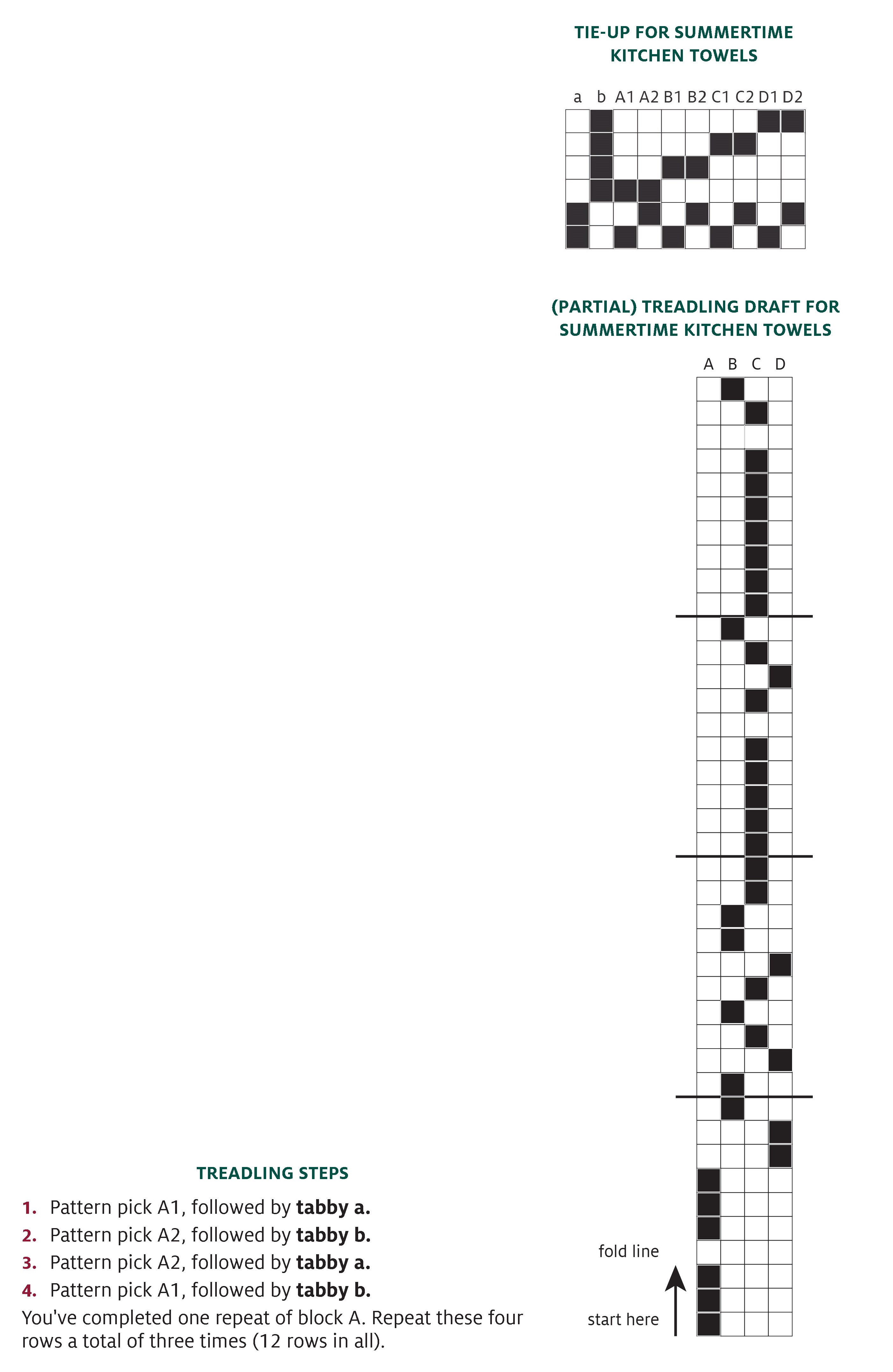
You'll continue following the draft, looking at the profile draft, then the instructions for that block.
Profile drafts can take your weaving to the next level. Designers use them all the time to play with color and motifs in different weave structures.
Notes
Resources
Essen, Deb. Unlocking Profile Drafts video, Long Thread Media.
van der Hoogt, Madelyn. The Complete Book of Drafting for Handweavers. Shuttle Craft Books, 1993.

